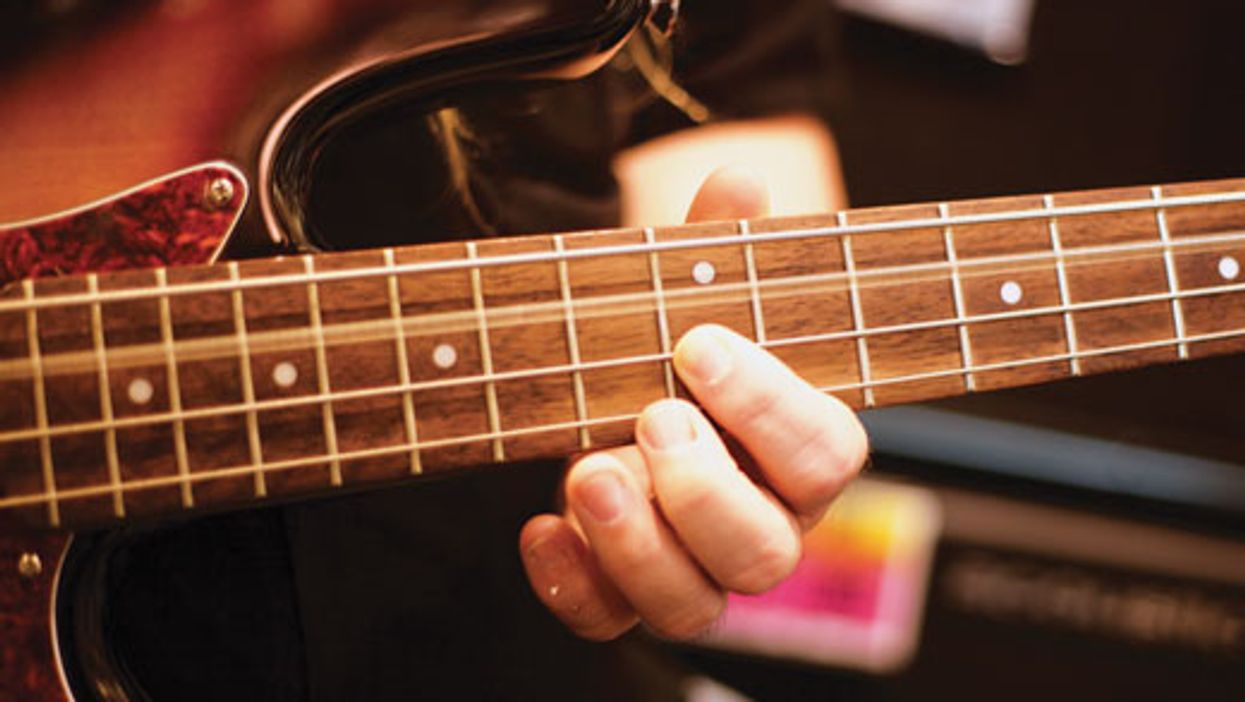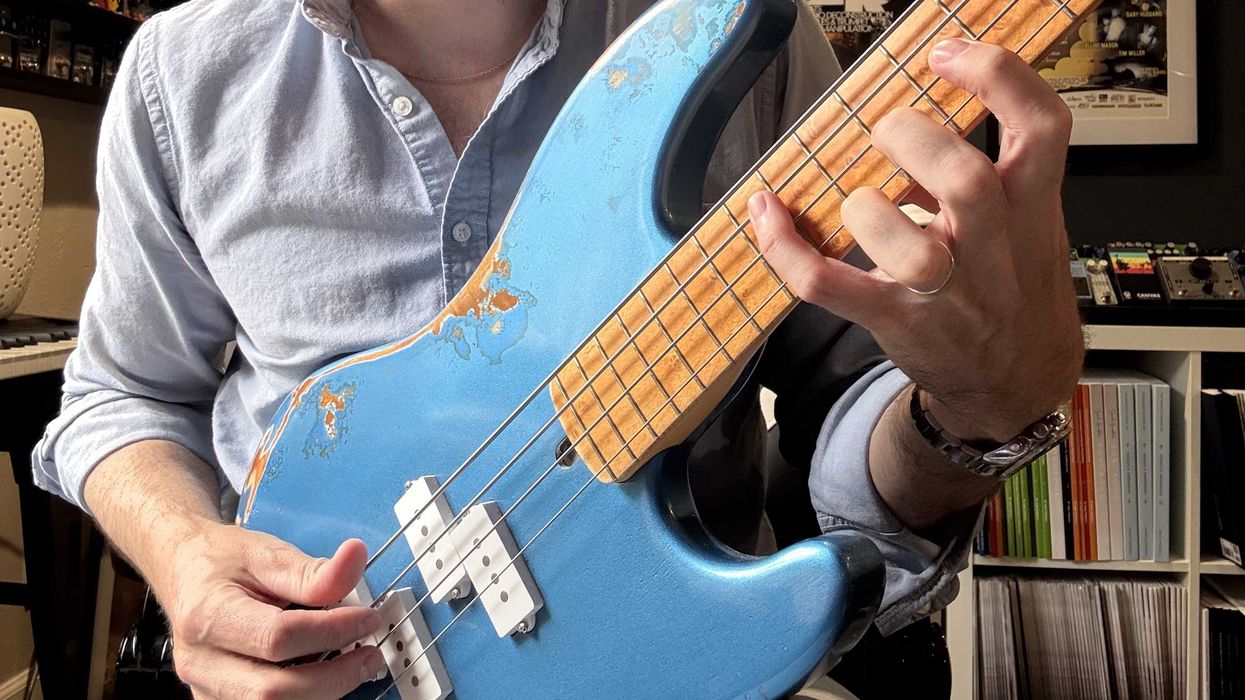Let's dive into a concept that's quite common in many styles of music and on many different instruments: the pedal tone (aka pedal point). The term has developed a looser definition over the years, but it originated in the classical world to describe sustaining a single low note with a pipe organ's bass pedal while other voices, notes, or chords change above it.
I first encountered the term as a music-school student in my early 20s. My jazz teacher had me pedal on the 5 an octave below the tonic in anticipation of returning to the tonic, while the other instruments went through a more traditional sequence of turnaround chords to lead back to the tonic. When my ear first experienced the pedal sound, I was amazed at the power the bass guitar could wield by simply staying put.
The aural sensation is like a sailboat leaning over in strong winds or a sports car going around a curve and having almost all its weight transferred to the outer two wheels. When you land back on the tonic after pedaling for a while, it releases all musical tension—like our sports car hitting a straight line and getting its speed back, or the sailboat becoming upright again.
The sheer power of the pedal tone really puts the bassist in the driver's seat of a band in a big way. Over the years, I've come to hear and use the term in a more relaxed way, with it usually meaning that you return to the pedal tone betweenthe other notes of your fill, riff, or bass line, rather than have it constantly sound underneaththe other notes you're playing. With this version of the definition, it seems that most hard rock and heavy metal riffs are based on the concept. Though this application of the pedal point yields quite a different sonic experience from the aforementioned jazz example, it remains an incredible tool for both writing music and creating dexterity exercises. So, using a pair of well-known songs to illustrate the concept, I'd like to share several examples of basing your line on a pedal tone.
“Everytime You Go Away"
The sweet bass riff Pino Palladino plays in the choruses of this 1985 Paul Young hit can almost be called a part, since it reoccurs in the same place in every chorus throughout the song. The song is in the key of F and the riff happens between the 2nd and 3rd voicings (Dm to Gm) of the back half of the chorus. I have used this pedal-point-based fill so much that my production partner—who ends up editing most of my bass tracks—makes fun of me for it, even though he'll also admit to being a fan of this fast but very musical succession of notes.
The riff uses the major 3 as the pedal point, which in this case is the A on the 7th fret of the 2nd string. The riff starts with the pedal tone and then walks down the F major scale from F (1st string, 10th fret) to D (1st string, 7th fret), while returning to the pedal point between every note. Only the first half of the riff uses the pedal tone; the second half contains an F major triad starting on the 5 (C–F–A), and finishes with a G, which serves as a passing tone to the next chord voicing.
“Sweet Emotion"
This classic bass riff from Aerosmith's Tom Hamilton makes a great dexterity and string-skipping exercise. After starting off with A on the 12th fret of the 3rd string as our pedal tone (Photo 1), the riff hits G, the b7 (1st string, 12th fret). Hamilton then plays two plucks on the pedal tone, followed by the octave A (14th fret, 1st string), which is then followed by two more plucks on our lower-octave pedal tone.
The second half of the riff, which puts a nice bow on the whole thing, consists of D (12th fret, 2nd string) and C# (2nd string, 11th fret) separated by yet another double-pluck on the pedal tone. Typically, this type of riff is played an octave down so you can use an open string as the pedal point (Photo 2)—thus making the execution much easier—but Hamilton's riff certainly serves as a much more musical ear-bender.
Enjoy practicing these tunes and be sure to cut the pedal tone off so the other notes can be heard clearly. Otherwise, we'll be back at the origin of the pedal tone with the pipe organ sustaining a rumbling bass note below the other notes. Happy pedaling!


















